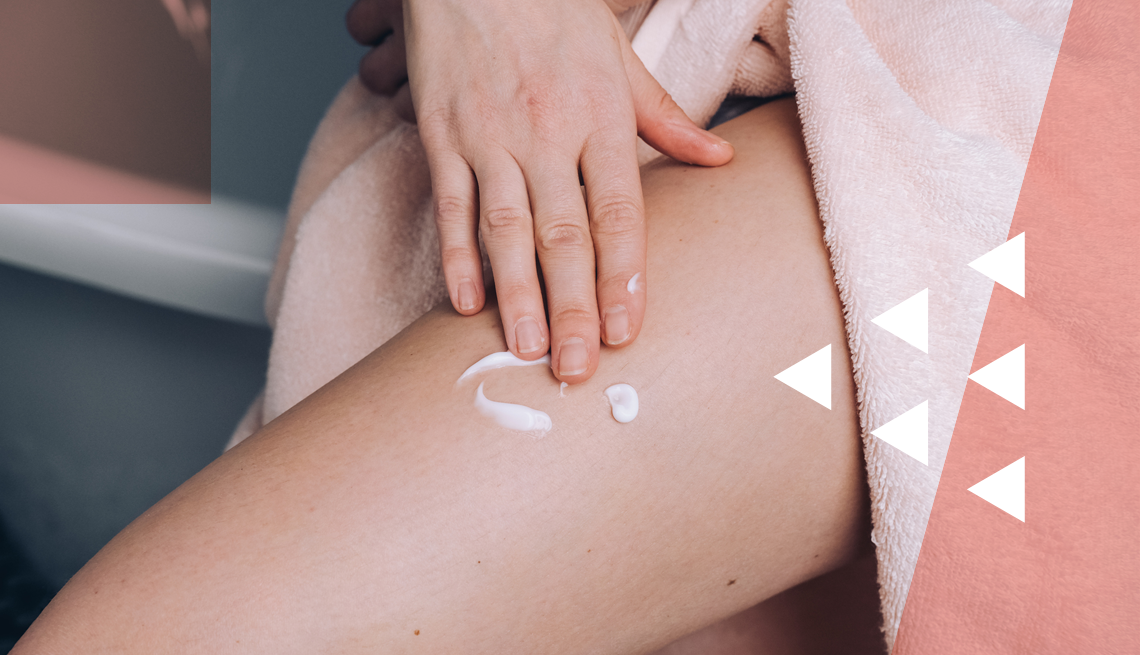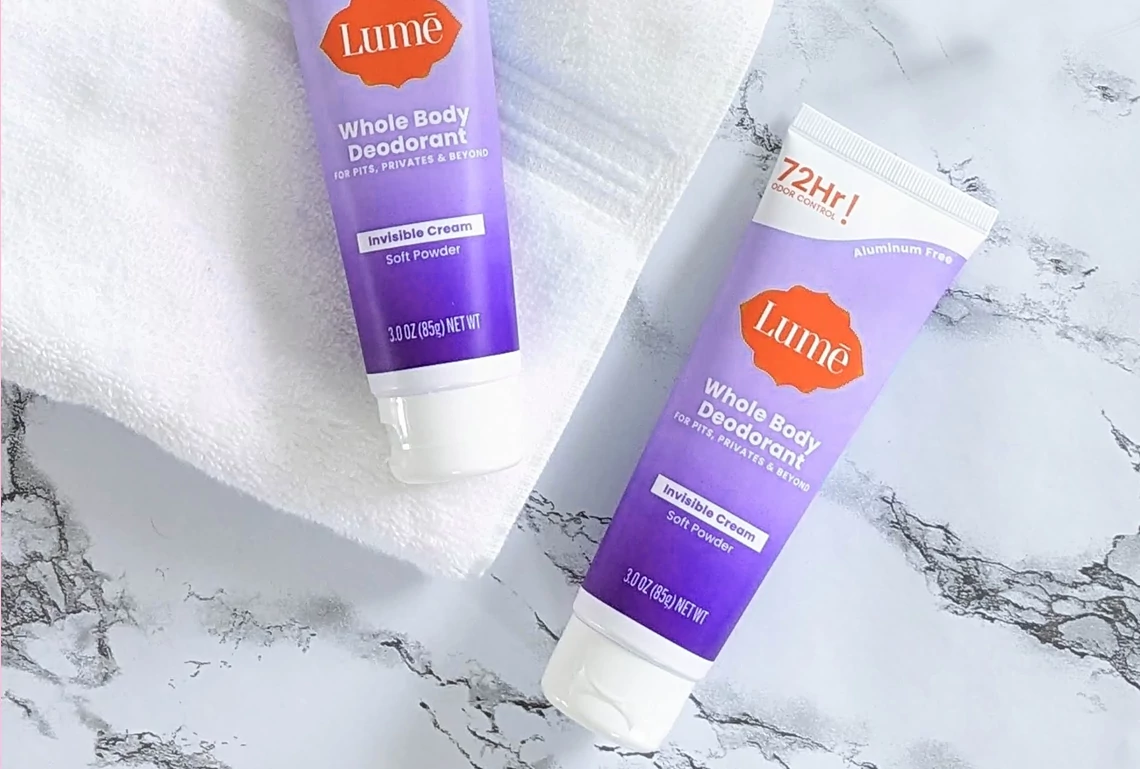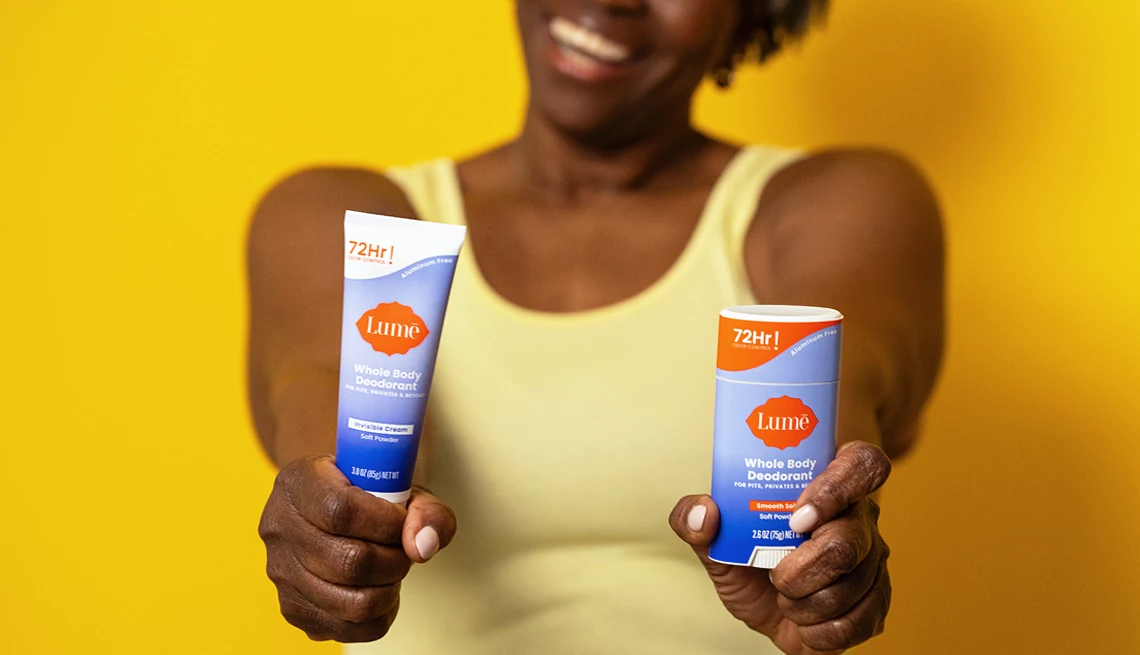AARP Hearing Center


Do I stink?
That’s the question I’ve been forced to answer this summer as I’ve been inundated with full-body deodorant pitches. It started when I was watching TV one night — the energetic Shannon Klingman, 54, a former ob-gyn who created Lume (pronounced Loom-ee), her line of specially formulated deodorants meant for “pits, privates and beyond!” (Or, she sometimes says, “from the pits to the balls … of your feet.”)
Klingman launched Lume in 2017, inspired by her patients who complained about unpleasant odors in their private areas. The concept took off, and drugstore shelves are now crammed with not only Lume, but also more recent incarnations of full-body deodorants from major players in the personal hygiene space, including Proctor & Gamble and Unilever.
My usual underarm deodorant seems to be working just fine, however an objective sniff test of my worn gym clothes suggested that while my sweaty bod doesn’t smell like a bed of roses, my feet are the areas of most concern, odorwise. (I enlisted the noses of family members who are frank about such things.)


A not-super-scientific test of full-body deodorants
I bought a bagful of different full-body deodorants (thank you, self-checkout machines) and my not-unusually-smelly husband gamely offered to help me test them on a particularly steamy day. We sprayed or rubbed in the stuff from our necks to our toes — as if we were putting on sunblock — and took a long walk in a nearby park.
Afterward, we checked each other’s stink level and realized we smelled … like the deodorants. My arms were fragrant with peach and vanilla blossom (Secret’s Whole Body Deodorant invisible cream); my legs and feet emanated coconut & vanilla (Dove Whole Body Deo invisible cream); my torso smelled like baby powder (Lume’s Whole Body Deodorant “soft powder” scented invisible creme). My husband was rich with a mix of cucumber & mint (Native Deodorant & Body Spray) on the front of his body and, on his back, vanilla — or “notes of vanilla & shea,” according to the can of Old Spice’s GentleMan’s Total Body nitro spray.
The verdict? They worked. After our sweaty walk, we smelled like a couple of delicious, vanilla-infused summer salads.
A bit more scientifically (using a control!), I later slathered the bottom of my left foot with Dove’s coconut & vanilla-scented Whole Body Deo Anti-Friction Stick, leaving the other foot au naturel. Post-gym, the left sock smelled quite lovely; the right one, if you held it to your nose and sniffed (as one doesn’t!), was kind of gross smelling. I also tried deodorants from the other brands on my feet and they also more or less eliminated any unpleasant foot odor.
But do we need this stuff, really? And is it true, as my husband said after our walk, that “the world would be a better place if everyone smelled like coconut & vanilla”? Answers: maybe, and, yeah, probably.





































































You Might Also Like
Ultimate Guide to Perfume for Any Season
Need a new fragrance? Perfume pros point you to your next signature scentHeatwave Secrets of Women Who Always Look Cool
Ways to stay fresh even when it is hot, hot, hotAARP Smart Guide to Sun Protection
SPF is just one important factor — here are more tools that can help in preventing damage from harmful rays
Recommended for You